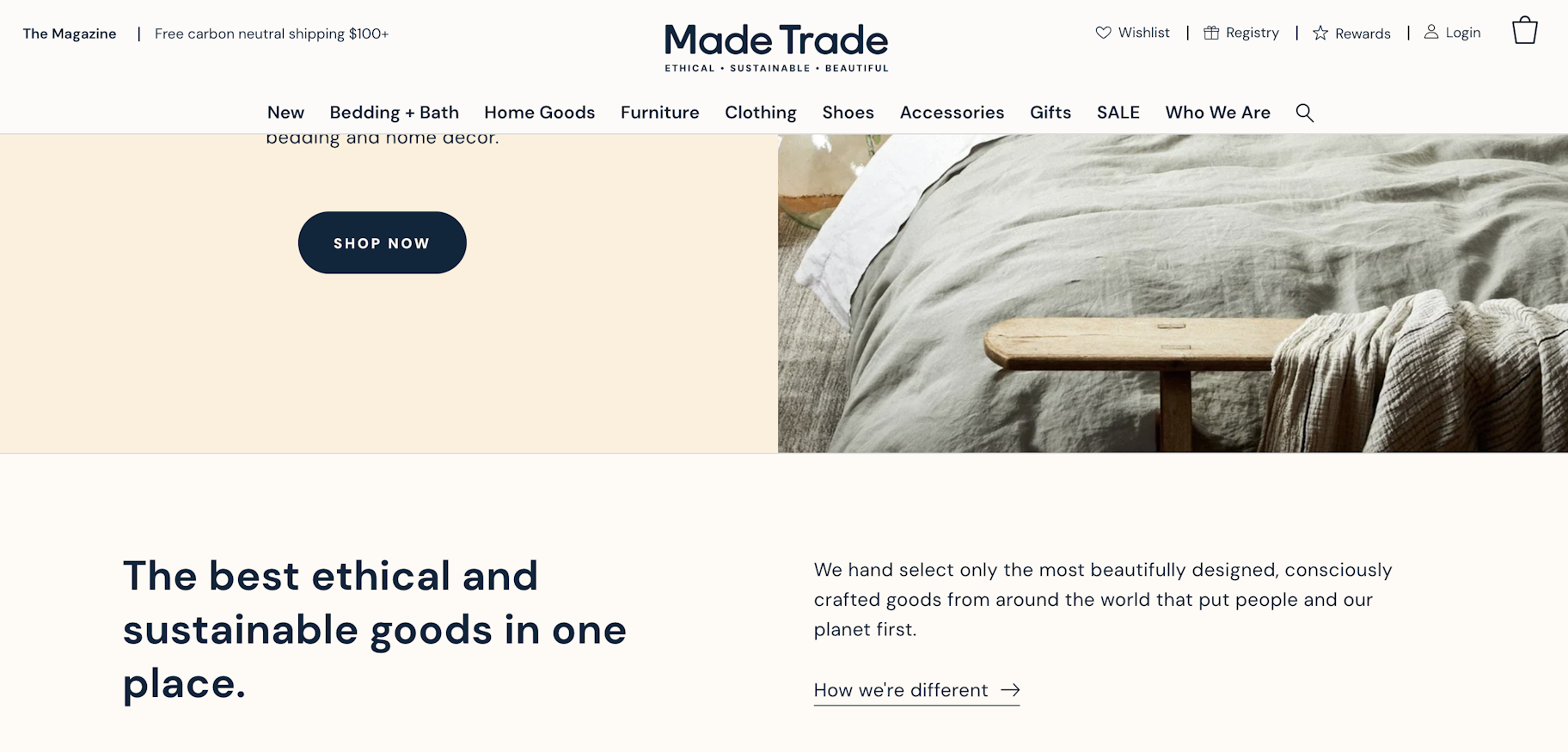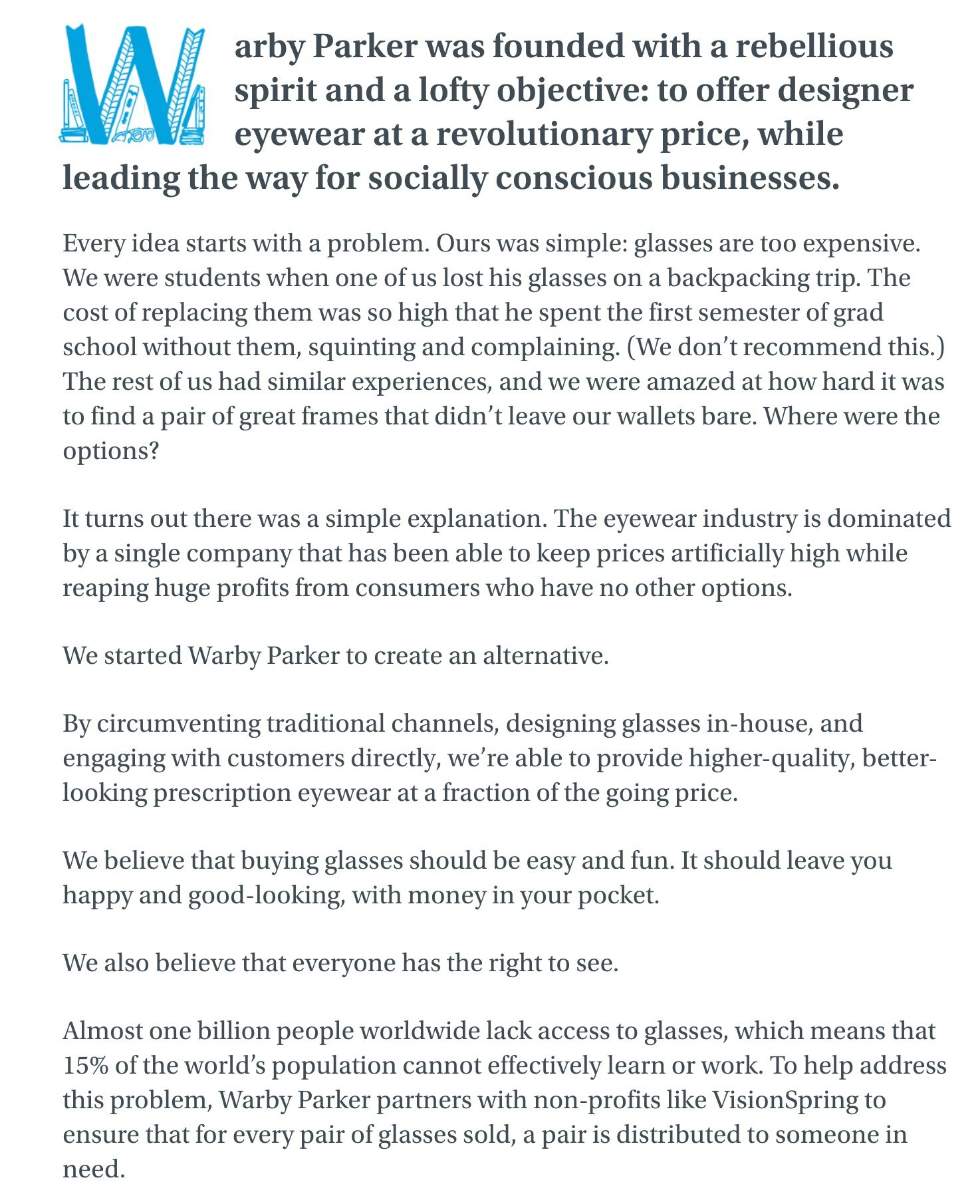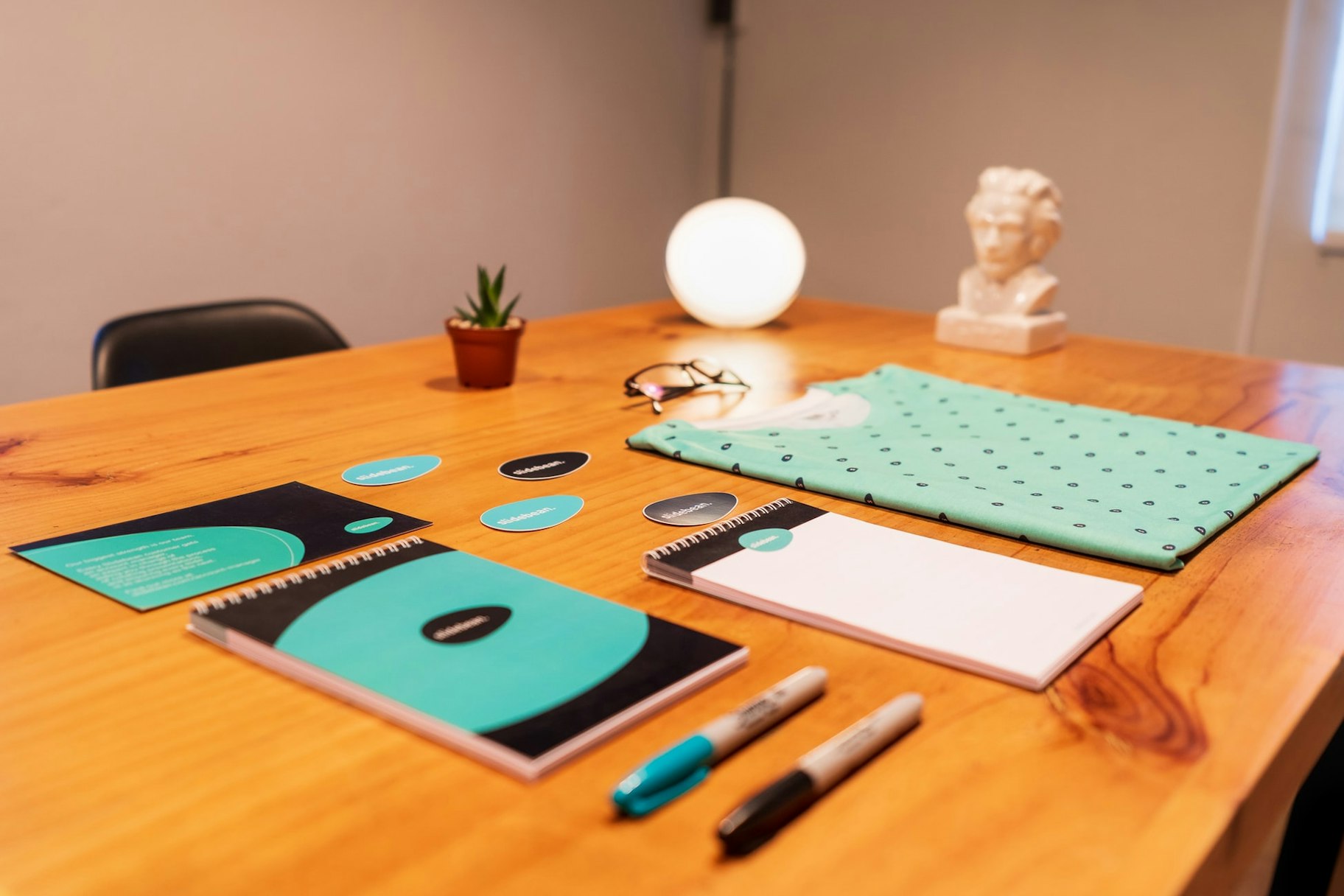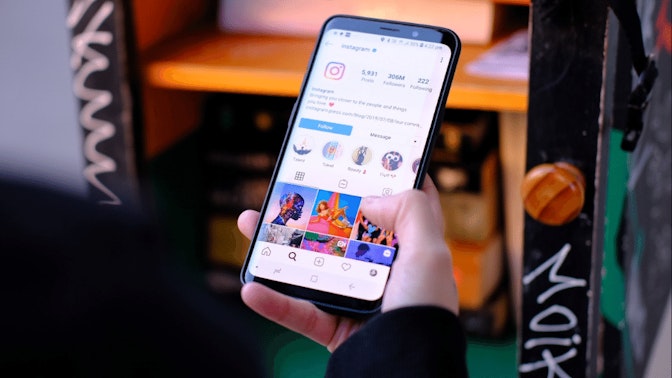Brand building is a crucial part of launching a new business. You may have an exceptional idea or a groundbreaking product, but if you don’t back it up with a strong brand, it’s likely to remain unnoticed. A brand helps you communicate your story, highlight your USP, and connect with your audience on a deeper level.
This guide will walk you through the process of building your brand from the ground up. You’ll learn how to design a memorable logo, create the perfect slogan, and define a unique brand personality that sets you apart from competitors.



What is a brand?
A brand is the unique identity of a company that shapes how it is perceived by consumers. It encompasses visual elements like your logo and website design, as well as your tone of voice, mission, values, and more. A brand has a set of rules—called brand guidelines—that dictate how you should market and present your image.
What are the foundational elements of a brand?
Building a brand goes beyond just having a logo, slogan, or color scheme. Before you can start working on website design or developing marketing materials, you need to lay a solid foundation.
Here are the essential elements that should be part of your new brand guidelines document:
Mission and values
Your brand’s mission is a statement that clearly defines its objectives, purpose, and direction. Your brand values are the fundamental beliefs that your business stands for in this industry. Both are crucial when building your brand because they guide your decisions and actions. Everything your brand does should line up with your mission and values.
Brand voice
Brand voice is the style of communication that your brand uses to engage with its audience. Defining your brand voice early ensures brand consistency across all touchpoints. You can experiment with different tones (formal, candid, authoritative, etc.) in the early stages of brand building. Use the feedback and reactions from your audience to develop a cohesive voice for your brand.
Target audience
Identifying your target audience is key in the early stages of launching a brand. What age group do they fall under? What types of media do they consume? Knowing these details about your audience will help you craft a brand that appeals directly to them.
Brand identity
Your brand identity is made up of your business name and the visual elements that make its appearance unique, such as your logo, color scheme, photography style, and social media handles. Brand identity also covers your brand story and unique selling proposition (USP).
Style guide
A style guide is a section of your broader brand guidelines. It lays out exactly how your brand will appear on different platforms or channels. Influencers and media agencies can use it to ensure they’re using your logo, fonts, brand voice and tone, and overall aesthetic correctly.
The importance of brand guidelines

Brand guidelines are your brand’s playbook. This document or collection of documents takes a stance on your brand’s appearance across different channels. Brand guidelines capture the decisions you make during the brand-building process so that others can understand and use your branding assets.
A well-crafted set of brand guidelines will help your company:
- Maintain consistent branding across every interaction point
- Align staff, freelancers, retail partners, and agencies with your brand’s core message
- Streamline the hiring and training process by defining the traits valued in employees
- Serve as a key reference during communication crises
- Adapt and expand alongside your brand’s evolution
How to build your brand: a 9-step checklist
Now you know what a brand is, let’s look at how to build one from scratch.
1. Conduct market research
Building a successful brand starts with understanding the market. You need to identify who your potential customers are and who you’re competing against. Every solid business plan and brand strategy is based on this very research.
There are several ways to conduct market research before you start building your brand:
- Talk to people who might be your customers. Ask them about the brands they like in your area.
- Search online for your product or service to see who you’re up against.
- Scroll through social media to find out which pages or accounts your potential customers follow.
- Experience shopping from a customer’s perspective, both online and in stores.
- Keep an eye on the latest trends in your industry by reading articles, browsing social media, and using Google Trends.
During your research, identify what the leading brands are doing right. Understand what makes you different—this is your USP.
It’s also crucial to note your target audience’s habits, such as their preferred platforms, the language they use, and how they interact with brands. This information is key to developing an approach to effectively reach and engage with them.
2. Create a positioning statement
A brand positioning statement is a few lines that define your brand’s role in the market. It might not be something you share directly with customers, but it’s crucial for shaping your brand’s narrative and guidelines.
In this statement, you detail what you offer, who it’s intended for, and how you’re different. This unique aspect of your brand is what will help you attract attention in a crowded market.
Here’s a template you can use to create yours:
We offer [PRODUCT/SERVICE] for [TARGET MARKET] that [VALUE PROPOSITION]. Unlike [COMPETITION], our [KEY DIFFERENTIATOR].
Here’s how an example might look:
We offer chic, eco-friendly dresses for the modern woman that transition seamlessly from day to night. Unlike other fashion labels, our fabrics are 100% organic.
And here’s a real-world example:

3. Develop your brand voice and tone
Think about how you want to sound to your customers and the feelings you want to stir up when they interact with your brand. Is your voice playful or more on the serious side? Do you aim to be a comforting companion, a spark of creativity, or a voice of wisdom?
Create guidelines that outline the language styles you will embrace and those you’ll avoid in your messaging. And consider how your tone might shift across different channels, such as social media compared to customer service.
4. Choose a business name
Your company’s name is one of the key defining elements of your brand. Ideally, you want a name that isn’t already in use, has an available domain name, and reflects your brand or products well. It should be easy to remember and hard for others to replicate.
Here are a few approaches to choosing a brand name:
- Start with your own name (e.g., Donna Karan or DKNY).
- Combine parts of words (a portmanteau), like Pinterest (pin + interest) or Snapple (snappy + apple).
- Shorten a longer name into an acronym (e.g., HBO for Home Box Office).
- Twist a word’s spelling, drop or add letters, or give it a Latin twist (e.g., Tumblr or Activia).
- Pick a name that describes what you offer (e.g., The Shoe Company or Home Depot).
- Opt for a suggestive word or metaphor that reflects your brand’s essence (e.g., Buffer).
- Choose a word not typically linked to your field and give it new meaning (e.g., Apple for computers or Maple for health care).
- Invent a completely new word (e.g., Pepsi).
5. Outline your brand’s story
Your brand’s story is essentially the “why” behind your organization. All businesses need to have a purpose (beyond simply making money). Think about why you set up a business and how your products can positively impact people’s lives.
For instance, eyewear brand Warby Parker is built on the desire to deliver high-quality eyeglasses to customers worldwide, at a reasonable price.
The company tells its story about how it found a way to serve customers by avoiding conventional channels. Engaging with customers via direct online channels allowed it to offer good quality eyewear at a fraction of the cost.

The narrative identifies Warby Parker as a customer-first brand while outlining its commitment to providing affordable fashion to customers.
A good story can prompt customers to fall in love with your business and generate respect for your brand.
6. Establish your brand’s look
Establishing your brand’s look means deciding how you’re going to help customers identify your company at a glance. What visuals will make your brand stand out in their mailbox or inbox? When they browse online, what design elements will make them think, “That’s the one”? How will the style on your website make them feel at home and confident they’re in the right place?
Important parts of your brand’s look include:
- Brand colors: These are the colors you pick for everything related to your brand, like your website, emails, and boxes. Colors touch people’s feelings. Red, for example, is all about excitement, while blue is calm and trustworthy.
- Fonts: The style of your writing matters too. Sans-serif fonts feel modern and easygoing, but serif fonts look classic and serious.
- Imagery: The photos and drawings you choose say a lot. They should match the vibe you’re going for and speak to your audience directly.
Once you have the various elements you need to build your brand image, create a set of visual guidelines for your team and any external partners to refer to when presenting your company or personal brand.
7. Create a slogan
After setting up your brand’s direction and narrative, it’s time to create a memorable slogan. A great slogan is concise, sticks in people’s minds, and helps spread the word about your brand.
Consider the following strategies for making your slogan:
- Highlight what makes you the best, like Lush’s motto: “Fresh Handmade Cosmetics.”
- Use imagery or comparisons, similar to how Canon encourages, “Delight You Always.”
- Directly address your audience, as seen in Dollar Shave Club’s “Shave Time. Shave Money.”
- Mirror your customers’ outlook, similar to Adidas encouraging “Impossible is Nothing.”
- Opt for something rhythmic, like KitKat’s “Have a Break, Have a KitKat.”
- Convey the feel of your brand, similar to Patagonia’s “Built to Last.”
8. Design a logo
Your logo is another key aspect of your visual identity. Alongside your name, your logo will be one of the first things your customers recognize in your brand.
A great logo is meaningful and easy to understand. For example, Apple’s iconic apple image with the bite taken out of it doesn’t require any explanation. The best way to ensure your logo has the right impact is to work with a professional designer to help capture your visual essence.

A designer will be able to talk you through the different kinds of logos you can consider, such as:
- Brand emblems: A brand emblem is an image placed in a circle or shield in most cases. A great example is the Starbucks logo. Emblems have a sophisticated and traditional look.
- Mascot logos: Mascot logos often center around a specific character, like Wendy’s logo. They can help to humanize a business with a unique face.
- Lettermarks: Lettermarks transform an acronym name into a visual logo. The IBM logo is an excellent example of this.
- Icon: Icon logos use a simple image as an identifier, like the Twitter bird. They’re great for bringing a memorable visual to your brand image.
- Wordmarks: Wordmarks use a stylistic font to transform your brand name into your logo. These logos are excellent for making your name more memorable.
- Combination marks: Combination logos bring the name of the company and an image together, like the Taco Bell logo, for instance.
9. Integrate your brand everywhere
Businesses need to show their brand in every place to make it memorable. Applying your branding across all touchpoints gives it a cohesive brand story and fosters trust among the audience. Begin by integrating your brand into your:
- Ecommerce store: Choose a store theme that’s perfect for your brand identity and implement your company colors. Remember to showcase your logo on every page and highlight your brand voice in your website content.
- Social media: Social media is an excellent tool for building awareness for your brand. You can share posts that highlight your personality, post pictures and graphics representing your brand, and even encourage people to share your brand with their friends and colleagues.
- Marketing campaigns: Your brand should be clearly visible in every marketing campaign, whether you’re sending out email newsletters or connecting with customers via podcasts. Consistent brand representation is key to effective brand marketing.
Start building your brand
A strong brand is a must-have for any business. Without it, you can’t connect with your customers on an emotional level. Building a brand gives them something to resonate with and spread the word about. A brand is what keeps people coming back, distinguishes a business frorm its competitors, and turns one-time visitors into loyal customers.
Never underestimate the importance of building a brand.



How to build a brand FAQ
Brand identity represents how your brand is seen by customers, competitors, and the public. It encompasses your values, brand personality (including the voice and tone), and visual style. Your brand identity is reflected in every aspect of your company—including your logo, how you market your brand, the words you use, and the shopping experience you provide.
What is a brand kit?
A brand kit is a guide or document containing all the information necessary to represent a brand accurately. It usually comprises the company’s name, logo, color palette, and other approved visuals. Additionally, the kit might include details about the company’s founders, team, products, and objectives. A brand kit is an essential resource for PR teams, brand ambassadors, influencers, and affiliates. It ensures everyone talking about your brand gets its personality and voice right.
How do you build a brand with no money?
To build a brand without spending money, jot down your ideas and vision on paper—covering aspects like your brand’s unique voice and the values you want to embody. Then, craft a set of guidelines that define how your brand presents itself. If you can’t hire a pro to assist in the brand-building process, use free online tools to help you create a logo, find a company name, generate social media templates, and craft compelling copy.
Want to learn more?



